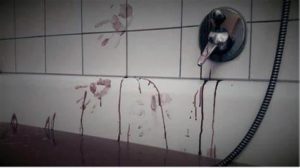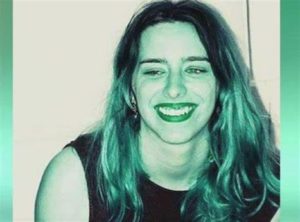THE HORRIBLE CRIME IN CUBA OF THE FRENCH GIRL RACHEL DEKEERSGIETER. PHOTOS.
It was the year 1931, a date when a number of events occurred, sometimes without much or no publicity on the Island: MACHADO was the dictator of the day; AFTER being examined, a ten-year-old boy receives the news that he will never be able to see again. His name is Frank Emilio, and he will be a glory of the Cuban pianist; ALICIA Alonso, nine years old, dances for the first time in public; AL JONSON hires Rita Montaner. Together they will tour the United States and Canada; KID Chocolate sticks to the belt as light middleweight world champion. Meanwhile, the multi-awarded athlete JOHNNY Weissmuller —who is not yet the cinematographic Tarzan— swims in the pool of the newly opened Hotel Nacional; THE Central Highway is inaugurated.
And, in that environment, what some describe as the most notorious crime in Cuba in the 20th century is perpetrated.
THE SO-CALLED “OLDEST JOB OF HUMANITY” IN CUBA…
In the first republican era, among those in Cuba who exercised the so-called “oldest trade in humanity”, there was a large number of women born in French territory.
In the 1920s, the French Girl Rachel Dekeersgieter joins that unhappy troop. She was brought from her native country by Oscar Villaverde, who combined his adventures as Chulo with those of owner or manager of the famous Havana cabaret “Tokío”, in San Lázaro y Blanco. Rachel would make the nightclub her whorehouse exercise area.
The site had a brilliant orchestra —for example, it was Mario Bauzá on alto sax—, where Alberto Jiménez Rebollar, supposedly Rachel’s lover, performed as drummer and singer of ballads in English, although Villaverde appeared as the French woman’s husband.
On December 15, 1931, the Havana newspapers display headlines announcing the perpetration of a horrible crime. In the building located on San Miguel and Amistad streets in Havana, next to the Astor Hotel, a thirty-year-old white woman appears naked and dead inside a bathtub.
The death certificate, issued by Dr. Reynaldo Villiers, issued at the Casa de Socorro, states that her body was found about forty hours after her death, and records the barbaric injuries inflicted on the victim.
The deceased was the French girl Rachel, who many came to know as “The Rose of France.”
MEMORIES OF THE PROCESS OF THE HORRIBLE CRIME…
The entire police-judicial process became a labyrinth, full of enigmas. The apartment where the girl was found was locked from the inside, so the police had to break the door to enter the premises. And he was on the third floor, with no other escape route for the killer.
No traces were found to indicate the identity of the criminal. Nor was the murder weapon found, which, according to popular rumor, was a bottle of champagne.
Many assured that the matter “was thrown to the ground” because what happened would have been an alcohol and cocaine binge that ended in homicide. And they added that among those involved were high figures in politics and finance. (Would there be, among those involved in the ugly affair, the American who represented the Ford house in Havana, with whom Rachel also had intimate relations?).
It is clear that the suspicions fell on the “husband”, Oscar Villaverde, and on her supposed lover, Alberto Jiménez Rebollar. But against none of them was it possible to present conclusive evidence.
Rachel was buried in the Calabazar cemetery, in the pantheon owned by Oscar Villaverde, who many years later would join her there, to be a grave mate who had been a bedmate.
No one was convicted. They wanted to baptize it as a “perfect crime” because the murder weapon or the motive for the murder never appeared. Also, no telltale prints were ever found. The crime went unpunished and the press did not give it as much coverage as the murder of Lola, “la Messalina Criolla”.
The crime would be a source of inspiration for the film The Strange Case of Rachel K. (1973), directed by Oscar Valdés.
EL HORRIBLE CRIMEN EN CUBA DE LA FRANCESITA RACHEL DEKEERSGIETER. PHOTOS.
Corria el año de 1931 fecha entonces cuando un numero de hechos acontecian, a veces sin mucha o ninguna publicidad en la Isla: MACHADO era el dictador de turno; TRAS ser examinado, un niño de diez años recibe la noticia de que nunca más podrá ver. Se llama Frank Emilio, y será una gloria de la pianística cubana; ALICIA Alonso, con nueve años de edad, baila por primera vez en público; AL JONSON contrata a Rita Montaner. Juntos recorrerán Estados Unidos y Canadá; KID Chocolate se ciñe la faja como campeón mundial de los ligeromedianos. Mientras, el multipremiado atleta JOHNNY Weissmuller —quien aún no es el Tarzán cinematográfico— nada en la piscina del recién inaugurado Hotel Nacional; SE inaugura la Carretera Central.
Y, en aquel entorno, se perpetra el que algunos califican del más sonado crimen en la Cuba del siglo XX.
EL LLAMADO “OFICIO MÁS VIEJO DE LA HUMANIDAD” EN CUBA…
En la primera época republicana, entre quienes en Cuba ejercían el llamado “oficio más viejo de la humanidad”, figuraba un crecido número de nacidas en territorio Frances.
En la década de los 1920, la francesita Rachel Dekeersgieter se suma a aquella tropa infeliz. Fue traída de su país natal por Oscar Villaverde, quien simultaneaba sus andanzas de Chulo con las de dueño o manager del famoso cabaret habanero “Tokío”, en San Lázaro y Blanco. Rachel haría del centro nocturno su área de ejercicio puteril.
Contaba el sitio con una brillante orquesta —por ejemplo, era Mario Bauzá el saxo alto—, donde se desempeñaba, como baterista y cantante de baladas en inglés, Alberto Jiménez Rebollar, supuesto amante de Rachel, aunque Villaverde aparecía como marido de la francesa.
El 15 de diciembre de 1931 los diarios habaneros despliegan titulares que anuncian la perpetración de un horrible crimen. En el edificio situado en las calles habaneras San Miguel y Amistad, al lado del hotel Astor, dentro de una bañadera, aparece desnuda y muerta una mujer de raza blanca, de unos treinta años de edad.
El certificado de defunción, emitido por el Dr. Reynaldo Villiers, expedido en la Casa de Socorros, expresa que el cadáver fue hallado unas cuarenta horas después de la defunción, y deja constancia de los bárbaros traumatismos inferidos a la víctima.
La muerta era la francesita Rachel, que muchos llegaron a conocer como “La Rosa de Francia”.
RECUERDOS DEL PROCESO DEL HORRIBLE CRIMEN…
Todo el proceso policíaco-judicial se convirtió en un laberinto, plagado de enigmas.El apartamento donde fue encontrada la muchacha estaba cerrado por dentro con pestillo, de manera que la policía tuvo que romper la puerta para penetrar en el recinto. Y se encontraba en un tercer piso, sin otra vía de escape para el asesino.
No aparecieron huellas que señalasen la identidad del criminal. Tampoco se halló el arma homicida, que, según el rumor popular, fue una botella de champán.
Muchos aseguraban que al asunto “se le echó tierra”, pues lo ocurrido habría sido una francachela de alcohol y cocaína que terminó en homicidio. Y agregaban que entre los implicados se hallaban altas figuras de la política y de las finanzas. (¿Estaría, entre los involucrados en el feo asunto, el norteamericano que representaba a la casa Ford en La Habana, con quien Rachel también mantenía relaciones íntimas?).
Claro está que las sospechas recayeron sobre el “marido”, Oscar Villaverde, y sobre el supuesto amante, Alberto Jiménez Rebollar. Pero contra ninguno de ellos fue posible presentar pruebas concluyentes.
Rachel fue inhumada en el cementerio de Calabazar, en el panteón propiedad de Oscar Villaverde, quien muchos años después allí se le iba a unir, para ser compañero de tumba quien lo había sido de lecho.
Nadie salió condenado. Se le quiso bautizar como “crimen perfecto» porque nunca apareció el arma homicida o el móvil del asesinato. Asimismo, nunca se encontraron huellas delatoras. El crimen quedo impune y la prensa no le dio tanta cobertura como al asesinato de Lola , “la mesalina criolla”.
El crimen sería fuente de inspiración para la película El extraño caso Rachel K. (1973), dirigida por Oscar Valdés.
Agencies/ CubaAhora/ Argelio Santiesteban/ Extractos/ Excerpts/ Internet Photos/ Arnoldo Varona/ www.TheCubanHistory.com
THE CUBAN HISTORY, HOLLYWOOD.



 THE HORRIBLE crime in Cuba of the French Girl Rachel Dekeersgieter. PHOTOS. * EL HORRIBLE crimen en Cuba de la Francesita Rachel Dekeersgieter. PHOTOS.
THE HORRIBLE crime in Cuba of the French Girl Rachel Dekeersgieter. PHOTOS. * EL HORRIBLE crimen en Cuba de la Francesita Rachel Dekeersgieter. PHOTOS.







